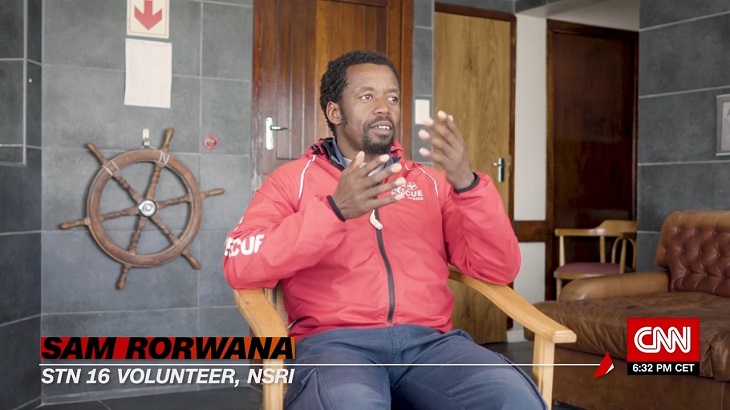In the latest episode of Inside Africa, CNN International meets the sea rescue services tapping into tech and tools to save lives in South Africa.
The National Sea Rescue Institute [NSRI], are spaced up and down South Africa’s nearly three-thousand-kilometer-long coastline where they provide a free rescue service to the public and prevent drowning at sea.
The summer season attracts many beachgoers – up to 40,000 visitors at a time on False Bay. Nicky Whitehead, Station 16 Commander, shares that the volunteers, who double up as rescue swimmers and safety instructors, must always be ready to help, “When we get an emergency call, all available crew gets to the station as soon as possible. The vessels get launched and you suit up in record time. When people get into trouble, we need to get them out.”
The program sees the crew record safety messages at the beginning of the summer season to raise awareness on TikTok. The message today is from Michaela Leo, “Good morning my name is Michaela Leo and I’m from NSRI Station 16. My safety tip for this season is for parents to watch their kids in the water at all times! Drowning is silent!”
The mission of the NRSI is founded on a love for the ocean and the local community. Drowning Prevention Manager, Andrew Ingram, began his career after being inspired by other volunteers, “I saw the volunteers running down launching the boats. Right from a very young age, I knew that that’s what I wanted to do.” Julian Singh, Training Officer, echoes this sentiment, having quit his office job to join the NSRI, and has even overcome his fear of learning how to swim.
Sam Rorwana is another example of a volunteer who joined the NSRI to help others, “Luckily, I had my father to always guide me and teach me about swimming. Not all my friends had that privilege. It wasn’t always a safe space for them as it was for me. That’s what led me to become a volunteer to help people around me.”
Station 16 is one of the few bases without a harbor. Technical innovations that they use to further their mission include jet ribs, buoys, and beach cameras. The pink buoy, which has helped to rescue more than 130 people, captures people’s attention as an effort to get helicopters and first responders to react to it.
As well as saving people, the NSRI also helps save marine life as most stations operate with a whale disentanglement kit.
The NSRI has also built a swimming pool in a shipping container that is being deployed in communities in need to teach people how to swim, and therefore alleviate the number of drownings.
Jill Fortuin, Executive Director of Drowning Prevention, explains how this initiative could have a knock-on effect in the future, “The face of the kids that get into the water that even wear swimming costume for the first time is absolutely priceless. The bigger picture is that it’s going to make a huge impact on that community. If those children can swim, they will certainly pay it forward to their children. The teachers that learn how to swim, they’ll pay it forward to future children at the school, their own children, and their own family members.”

